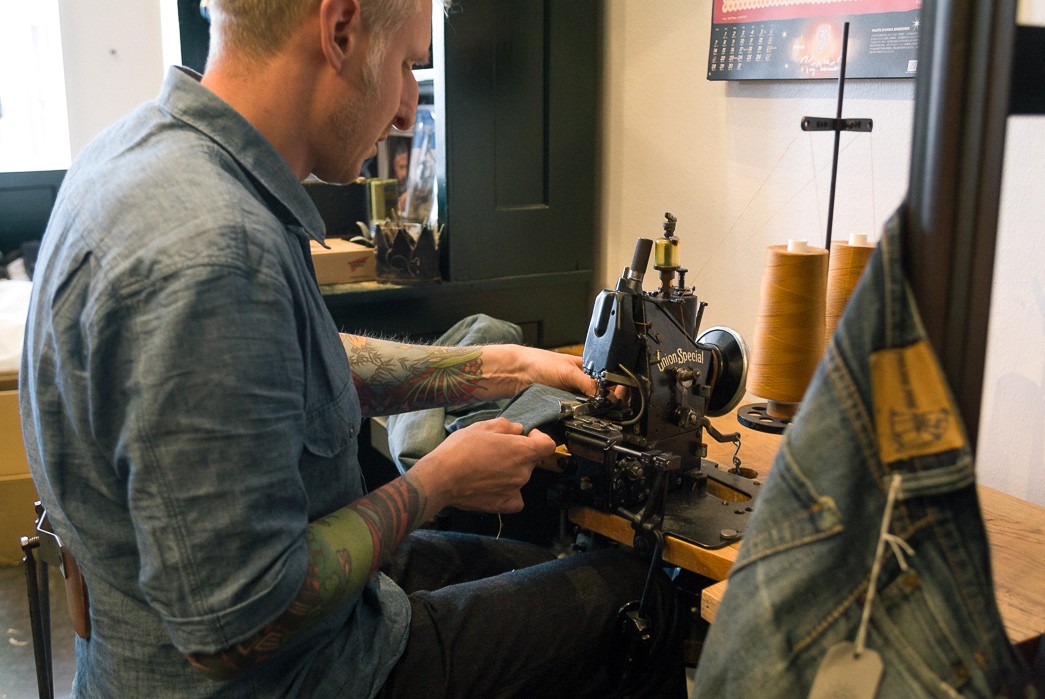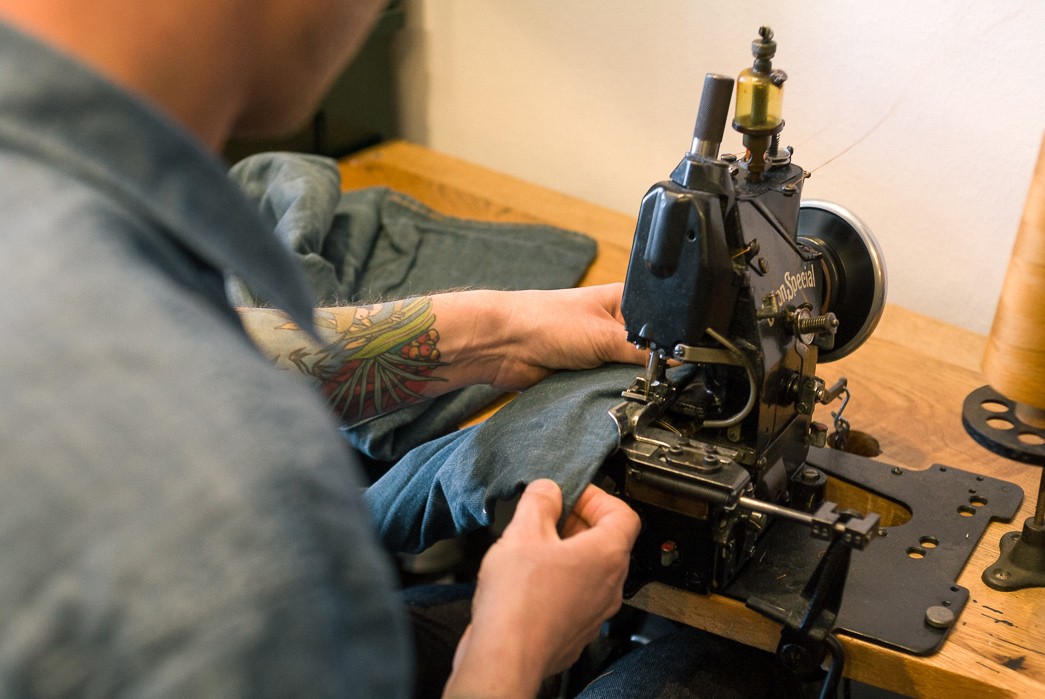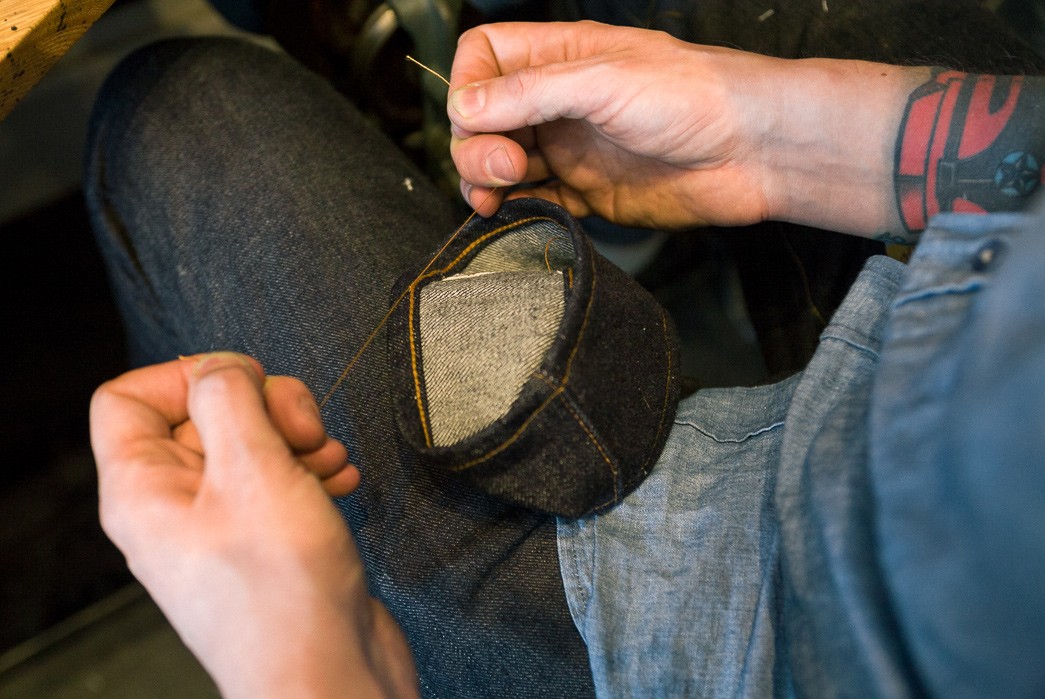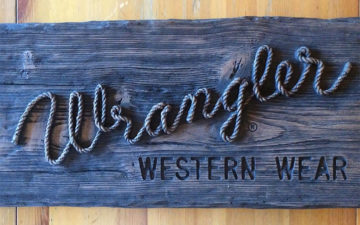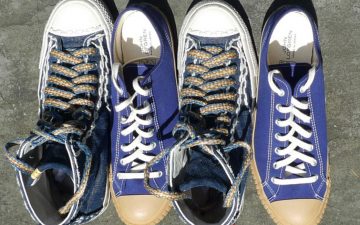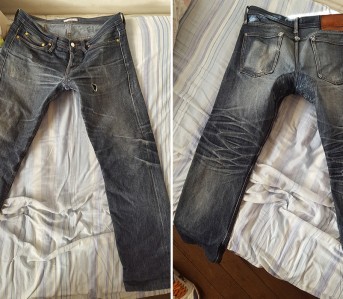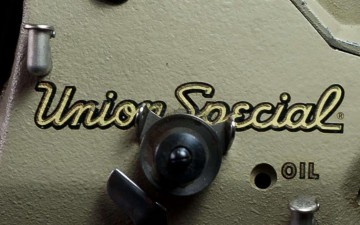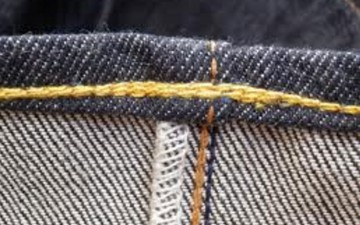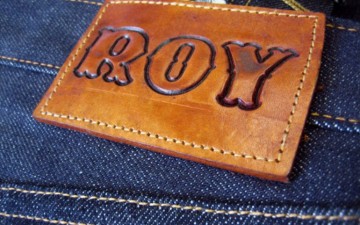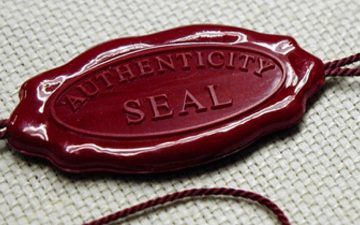Touted as ‘the first choice for many manufacturers,’ it was the leading machine for jean hems since its debut in 1939.
Many parts are proprietary and nearly impossible to find. Even the nuts and screws are odd sizes with strange thread counts that you won’t find at your local hardware store. You need a little more than a screwdriver to get one of these black cats purring again.
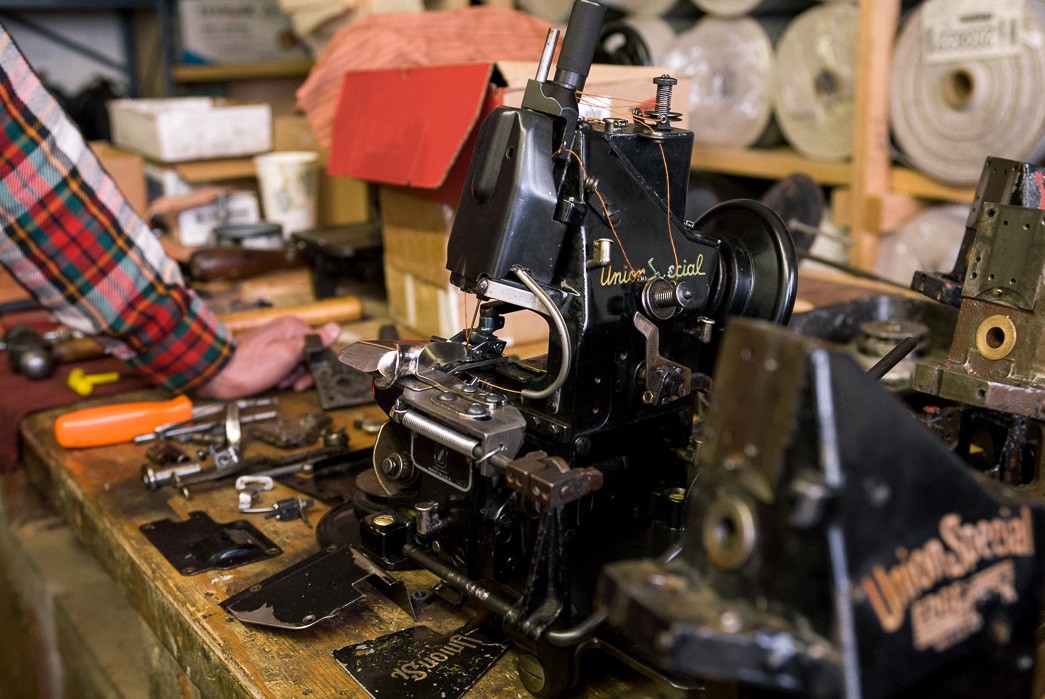
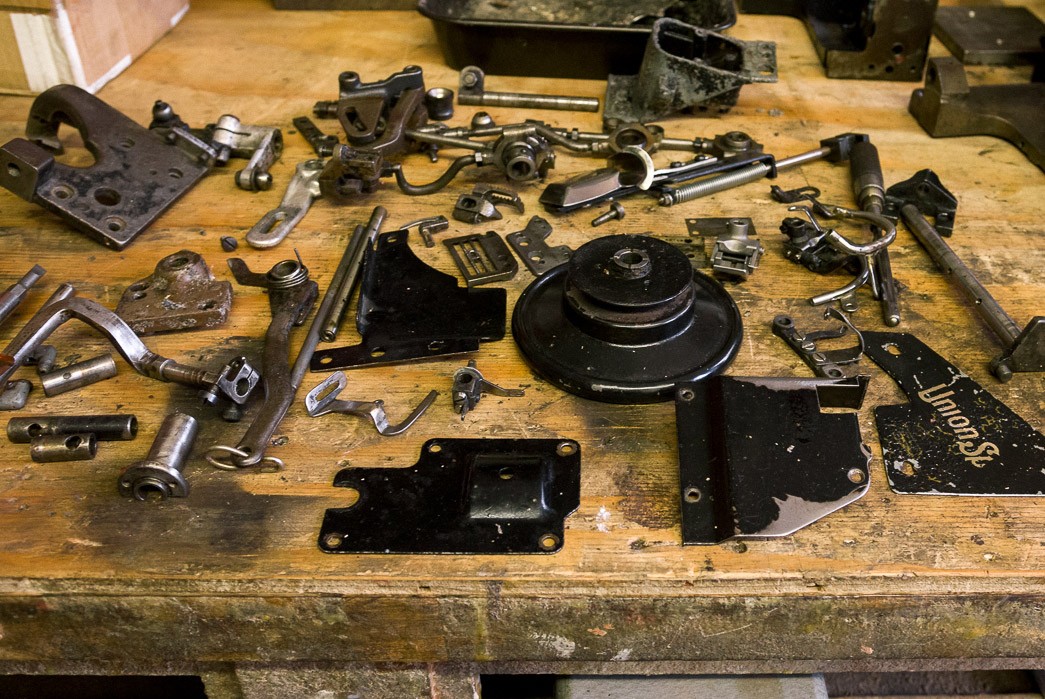
Oakland’s one man jeans maker, Roy Slaper, had his expensive paperweight lying around for a while before he decided to work on it. Altogether, it took him about two weeks to get it up and running but you could say it actually took him his whole life. Growing up around cars and machinery made fixing up vintage sewing machines a natural segue. In his studio he has welding equipment and even a machine lathe which are invaluable in producing many of the parts that are difficult to obtain.
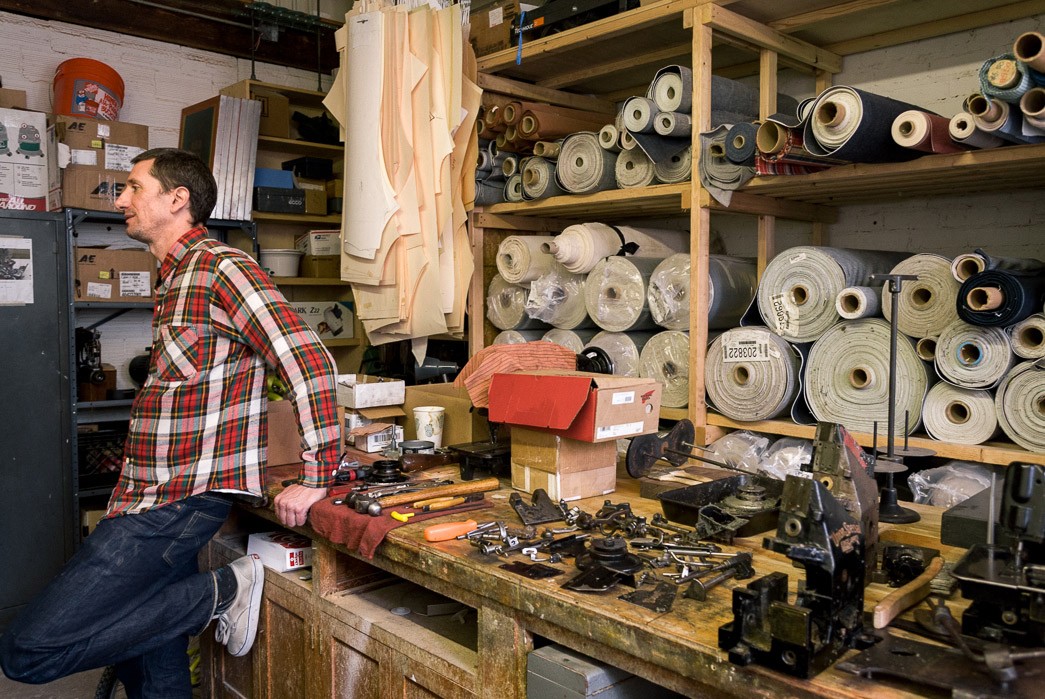

Image via Roy Slaper.
The work, however, doesn’t stop once the machine is running. The sewing table that his 43200G occupies is marred with scrapes and cigarette burns. You’d think that it came with the machine itself, but you’d be wrong. Slaper often has to do a full build out and make the tables custom to each machine in his studio. He takes particular care in finding the right wood to make it look authentic.
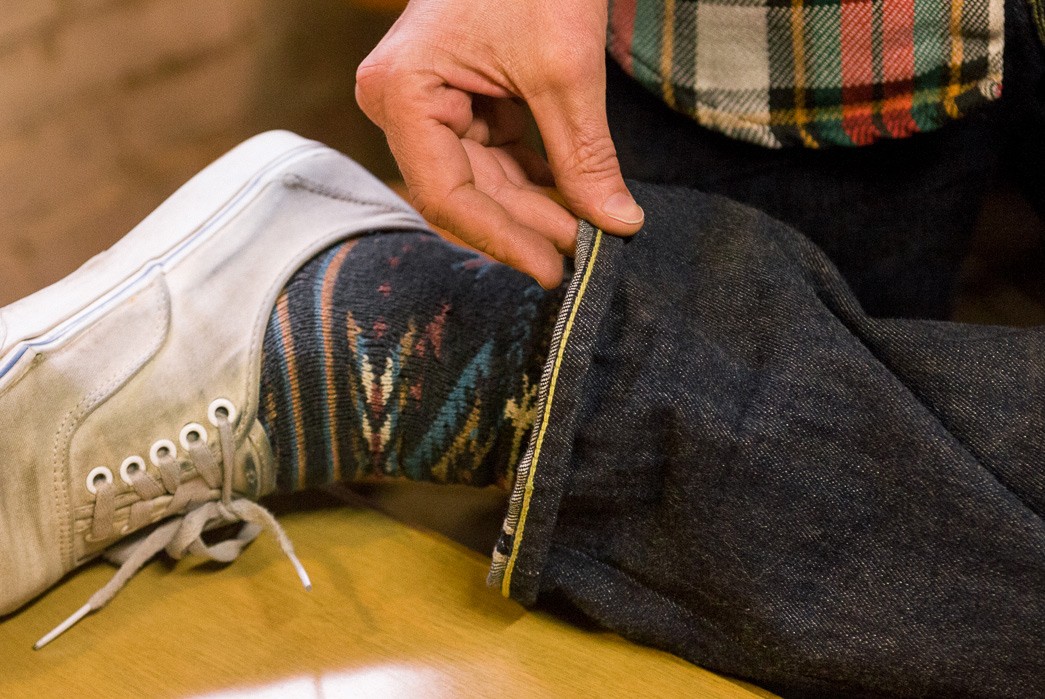
There’s a mystique to the machine that many denimheads fetishize, but at the end of the day, it made hemming easier, faster, and more efficient – the right tool for the job. Only later were the look and resulting roping fades admired and connected with authenticity.
Now, Roy’s doing chainstitching with a different machine, the Singer 105 Class, which was the contemporary version of the Union Special 43200G. Task-specific, it’s one of many machines Singer produced and may have even been made expressly for a single garment manufacturer. Roy says he still regularly finds Singer machines that he’s never encountered before. With so many machines produced, he speculates that the 105 Class may have never come into prominence simply due to oversight. To his knowledge, he’s never encountered any other one which makes his jeans even more unique.
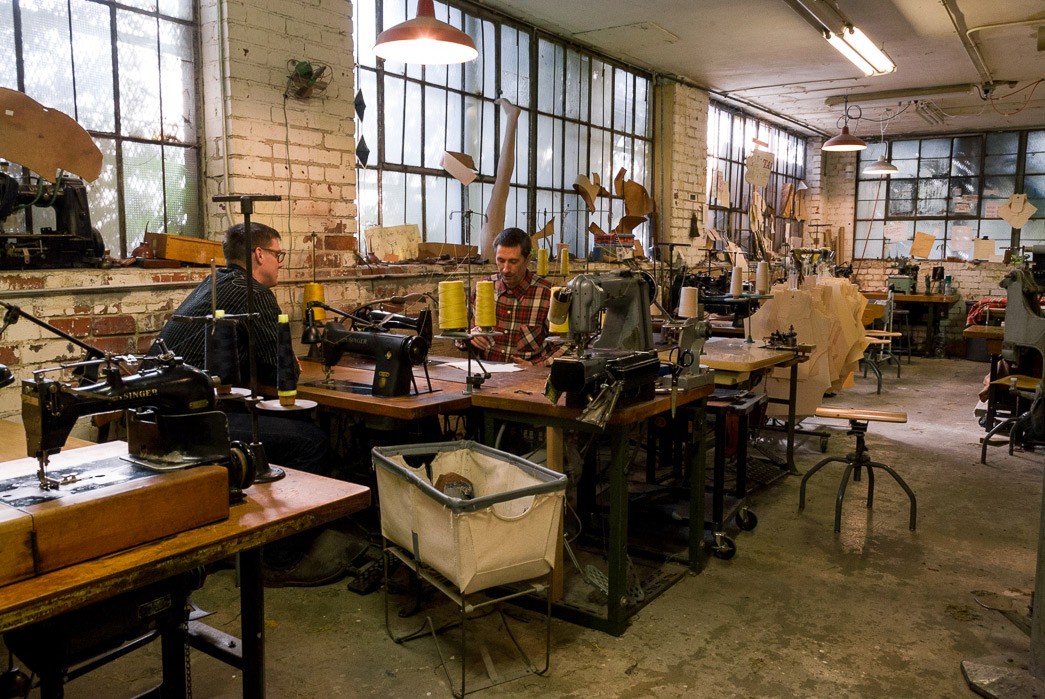
Roy expressed that taking apart and putting these old machines back together is a true labor of love. When he brings one back to life, there’s a part of him that stays with it.
“It’s more of an observation about how I work than something I understand; I wish I better understood how I get so personally involved with machines. There is creativity involved in the work and I grant the machines a little more life than I should. I want the piece to be both functionally excellent and beautiful. Once I achieve that — or really if I even see the potential of it in a machine to any level — I find their presence comforting and I like having them around.”
It’s a nostalgic work that makes it difficult to let any of it go. Why even give the 43200G away? He was planning on selling it over eBay just for some extra cash when Standard & Strange came into the picture. Rather than selling it to a random person, the crew over at Standard & Strange seemed like a better fit. With a brand list that includes such names as The Real McCoys, Momotaro, Orslow, and more, offering hems with the historic machine makes sense. They’re also close to Roy in Oakland, so he can help maintain it and not let his hard work go to waste. And at least with them, it stays within this small denim-minded community.
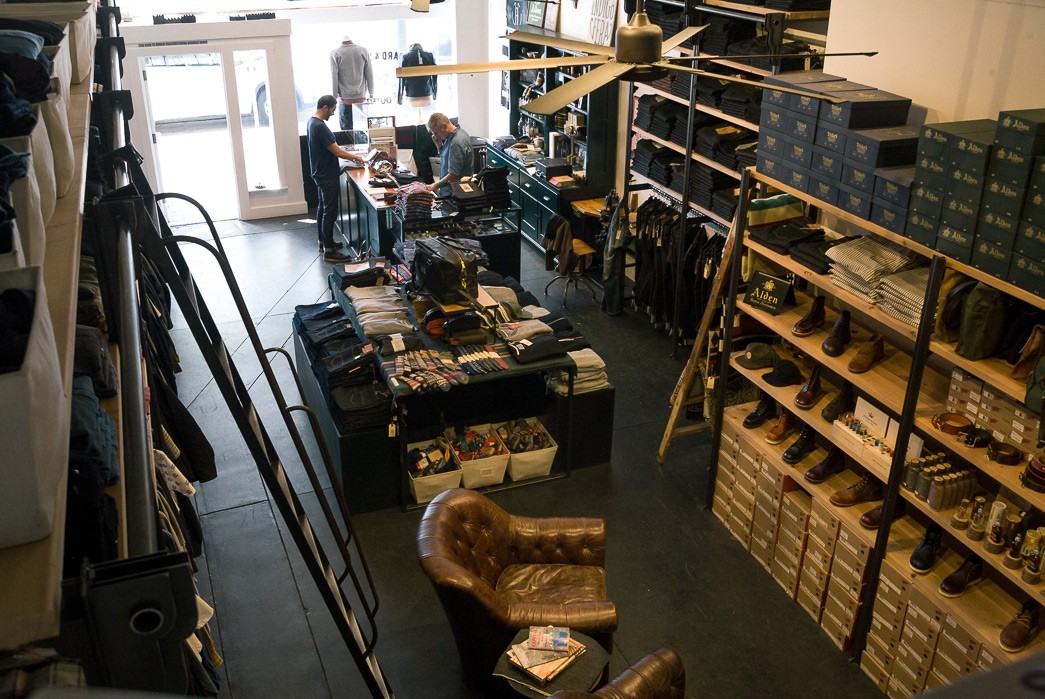
So you can add Standard & Strange to the list of places where you can get a chainstitch hem done by the Union Special 43200G; tuned and maintained with the help of Roy Slaper himself, one of the few people on earth with the skills to keep it going.
The machine’s come a long way from its birthplace, from sewing factory to studio to retail shop. With a great amount of care from a new wave of curious budding craftspeople, there will undoubtedly be more hands to pass the torch.
